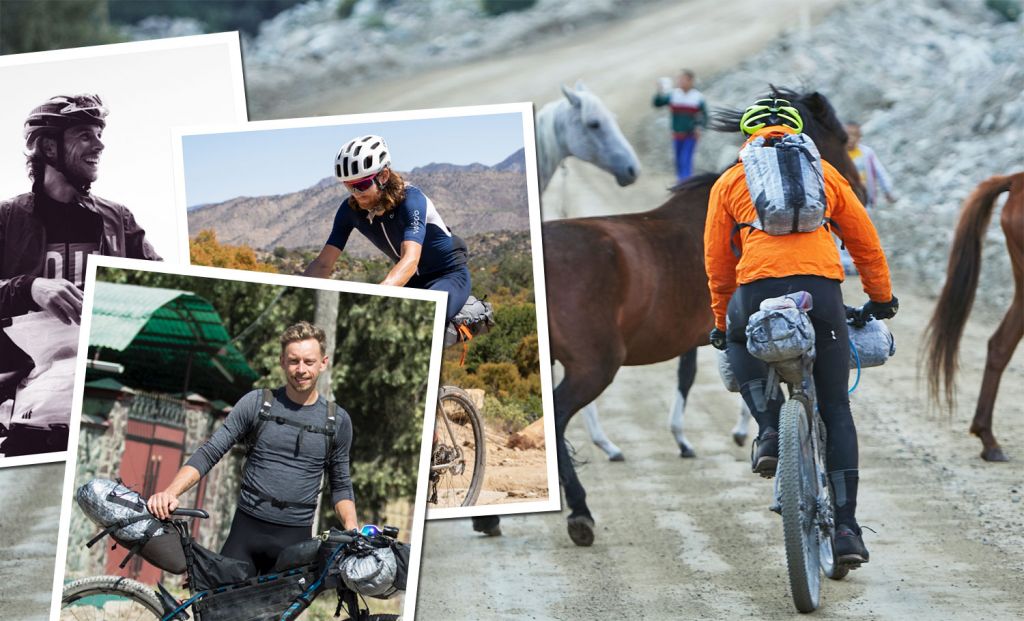
Bike-packing is looking to be one of the summer’s biggest fitness trends. But how do you make sure it doesn’t go from a fantastic adventure to a soggy, torturous slog that you won’t repeat? Three experts reveal all.
More now than ever, we’re craving a sense of adventure and escapism.
With two-week quarantines imminent for anyone wanting to travel aboard, it’s looking like a staycation will be the only option for a much-needed escape this year.
Hotels are likely to be closed until autumn. But what about campsites? Many sites across the UK are already preparing for a post-lockdown boom.
However, driving for hours to spend a week in a nameless campsite with a smelly shower block and screaming kids isn’t exactly everyone’s idea of F-U-N. So you might want to consider one of the years’ biggest cycling trends instead.
Bike-packing (originally known as “cycle touring”) is all about exploring the great outdoors for the love of adventure. It’s fun, offers a sense of freedom and the chance to cycle off the tourist trail without cars. Best of all, anyone can do it.
Usually done solo or with one other person, it’s the ultimate socially distanced holiday.
So, how do you go about planning such an adventure?
If you’re a total beginner, getting started can feel a bit daunting. What gear should you pack? Do you need a tent? And how far should you go?
We decided to ask the experts – three ultra-distance cyclists – for their nuggets of wisdom on how to have a fantastic bike-packing experience.
James Hayden and Ben Davies have both completed the Transcontinental Race (TCN), a gruelling 4,000km self-supported cycling and bike-packing race across Europe’s harshest terrains.
James Stout is an accomplished bike-packer and ex-racer who’s fresh from completing a challenging 1,000km endurance race through the relentlessly hilly Rwandan countryside.
Read on for some top tips on getting started.
1. Pack only what you need
You don’t need lots of fancy kit to bike-pack. In fact, that’s the beauty of it. The lighter your bike, the more enjoyable your experience will be.
Ben Davies, who placed second in the 2019 TCN and is an ambassador for Tailfin racks and bags, says: “I restrict my kit to the bare minimum – a second pair of shorts, wet/cold weather jacket, some tools and kit to be able to fix my bike and a toothbrush. My sleeping equipment is certainly not luxurious, with a lightweight bivvy bag and sleeping bag liner being adequate in most environments.”
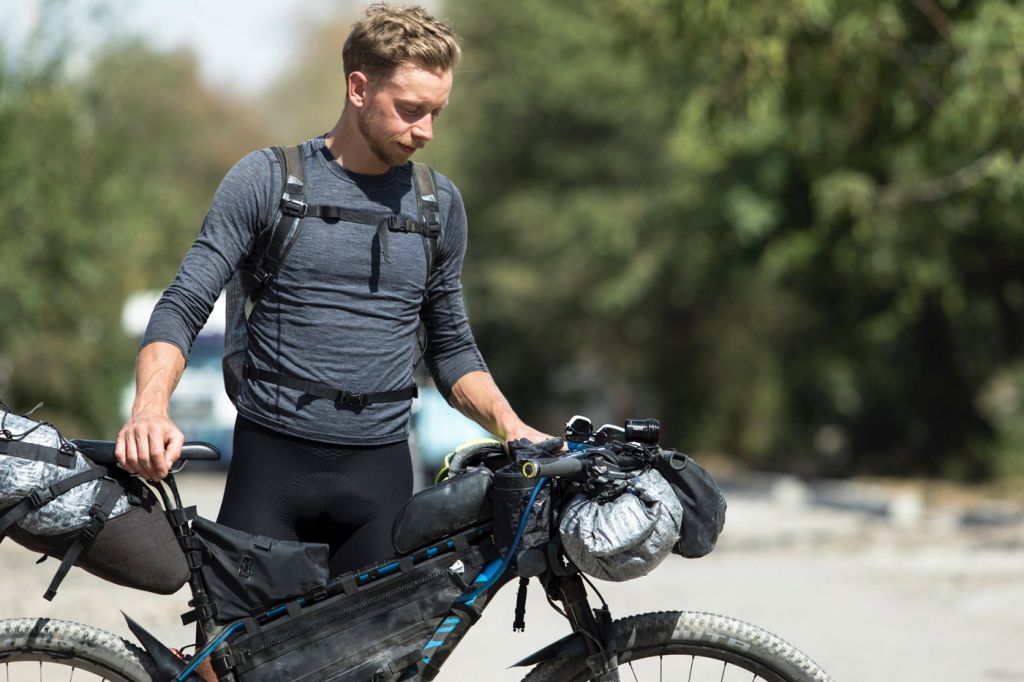
James Hayden, 2x winner of the TCN and an ambassador for Canyon, adds: “Depending on how long or how quickly you plan to ride will affect what you choose to sleep under, but a tarp or bivvy is enough for a good night’s sleep and aren’t too bulky to carry.
If you’re going to remote areas, make sure to carry a few basic spares for your bike to get you home – otherwise, it can be a long walk. And don’t forget a chocolate bar for when it’s been raining all day.”
2. Consider making your own cooking stove
Seasoned bike-packer and Velocio ambassador James Stout suggests a DIY cooking stove: “If you want to cook, the lightest and cheapest option is a homemade alcohol stove. There’s nothing better than going to bed after a hot meal or waking up to a good coffee to take in the spectacular view.”
3. Invest in a decent Merino base layer
A Merino base-layer is a bike-packing staple, according to James Stout: “I really love merino fabrics, a [Velocio] base layer and socks are a must. I like over-shorts as well, and they seem a bit less nerdy than bare spandex.”
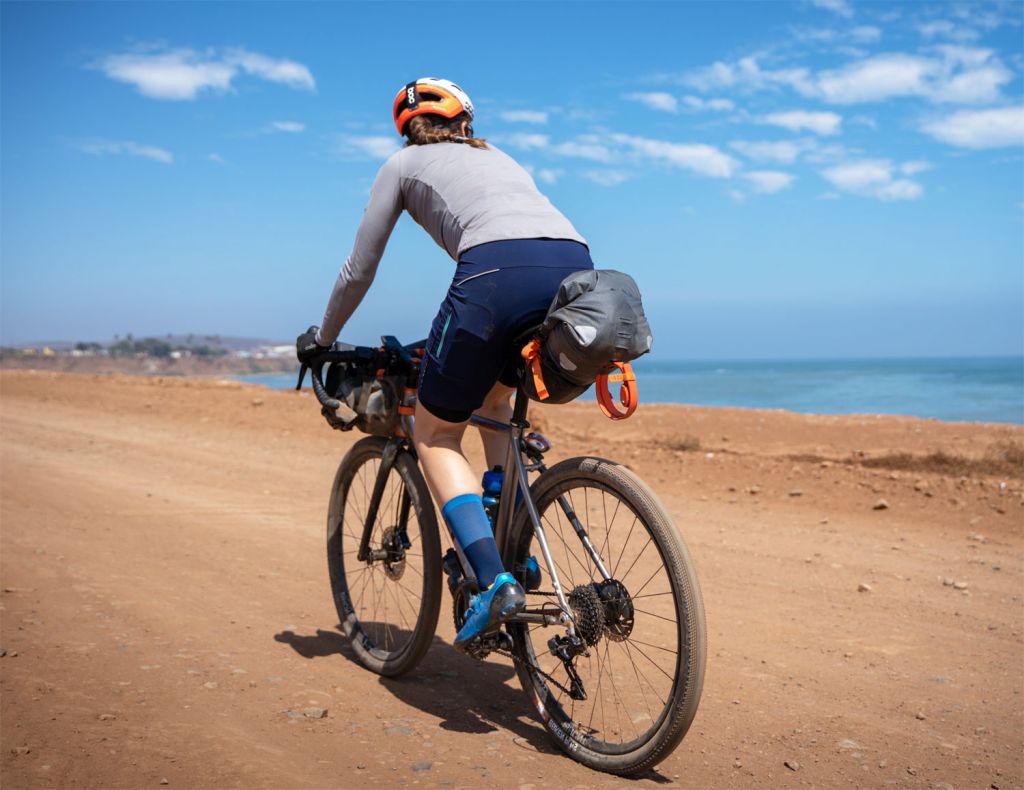
![]() 4. Take a set of dry clothes
4. Take a set of dry clothes
Sure, it’s essential to pack light but as James Hayden explains, having a set of dry clothes can be a game-changer after a long day in the saddle: “Having some warm/dry clothes for when you’ve finished riding each day certainly boosts morale, and helps keep you comfortable.”
5. Learn some essential bike maintenance
Don’t forget to pack some essential tools and spares in case of mechanical issues – and learn the basics: “The most important thing if you are new to cycling is knowing how to fix the simple, common mechanical issues you are bound to encounter at some point and importantly having the kit to carry out the repair. A pump and a couple of spare inner tubes are a must,” advises Ben.
6. Eat “real” food, little and often
“I generally stick to real food like cereal bars and fruit. They are easy on the stomach, nutritious over a number of days and provide sufficient energy. Pack your pockets out and eat something every hour,” says Ben.
James Stout agrees: “Keep on snacking! It’ll be a bigger caloric load than you are used to. So make sure to pack snacks where you can get them. Don’t rely on gels or bars; bring real food. Getting off your bike for lunch is nice, but don’t linger or overeat fatty food that is slow to digest.”
7. Start small
If you’re new to bike-packing, it’s smart to explore closer to home first, and on routes you already know. You might even want to consider a test run with all your kit loaded onto your bike.
“Start with a few hours taking in a café stop and then gradually build it up as you become more comfortable on the bike. Speed and distance will come,” says Ben.
James Stout adds: “If you’re nervous, start small. Even a 10-mile overnighter is a big commitment, and you should be proud of yourself for being brave enough to get out there!”
8. Research the terrain before you go
There’s a wealth of bike-packing routes in the UK, but not all roads and trails are the same.
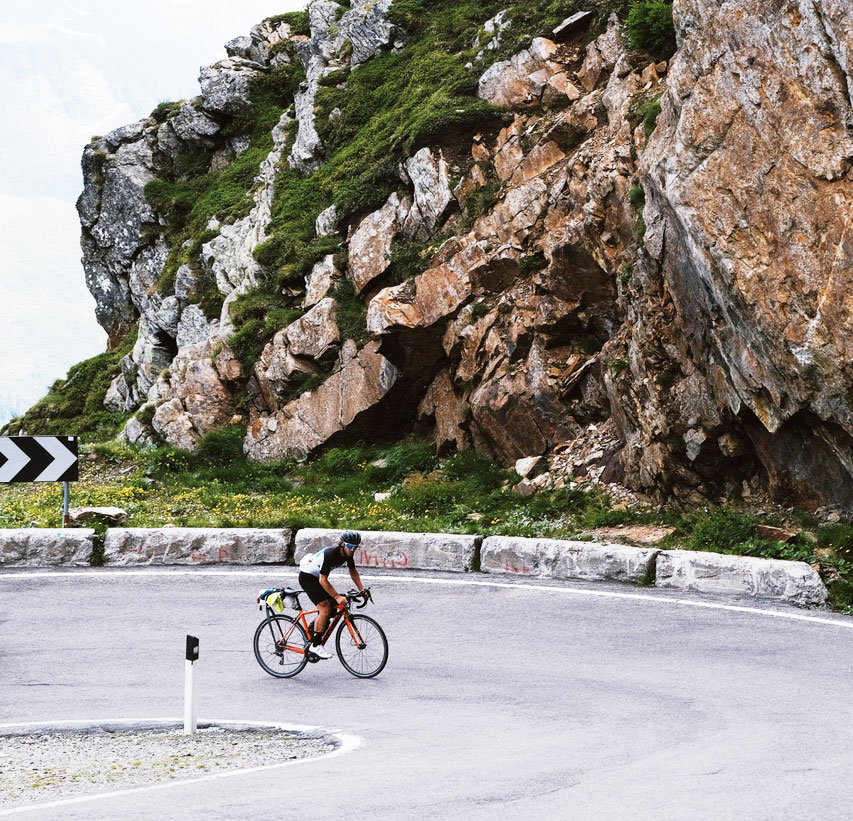
![]() Ben recommends Ride with GPS for route planning and knowing what time of terrain you’re going to ride on: “I spend so much time checking out their maps and looking at satellite images of roads. Remember that safety is the most important thing, so think about the types of roads or trails you are comfortable being on and plan around those.”
Ben recommends Ride with GPS for route planning and knowing what time of terrain you’re going to ride on: “I spend so much time checking out their maps and looking at satellite images of roads. Remember that safety is the most important thing, so think about the types of roads or trails you are comfortable being on and plan around those.”
9. Give yourself extra time
James Stout suggests overestimating the time you think it’ll take to reach your checkpoints: “I’d aim to have fun and not hit max mileage. Look at daylight hours. You can ride a lot further in Alaska in summer than in the UK in winter. And you’ll be slower than normal, so factor that in.
Primarily, I aim for what would be a good 5-hour training ride and then take 7-8 hours to do it.”
10. Leave no trace
It’s important to respect the places you’re bike-packing through and remember to ask landowners for access if you need to. “Be respectful and have some knowledge of the environment and local cultures where you are travelling. It should go without saying – but take home all your litter, or dispose of it responsibly,” says James Hayden.
If you’re bike-packing in the UK, The Countryside Code is a must-read.
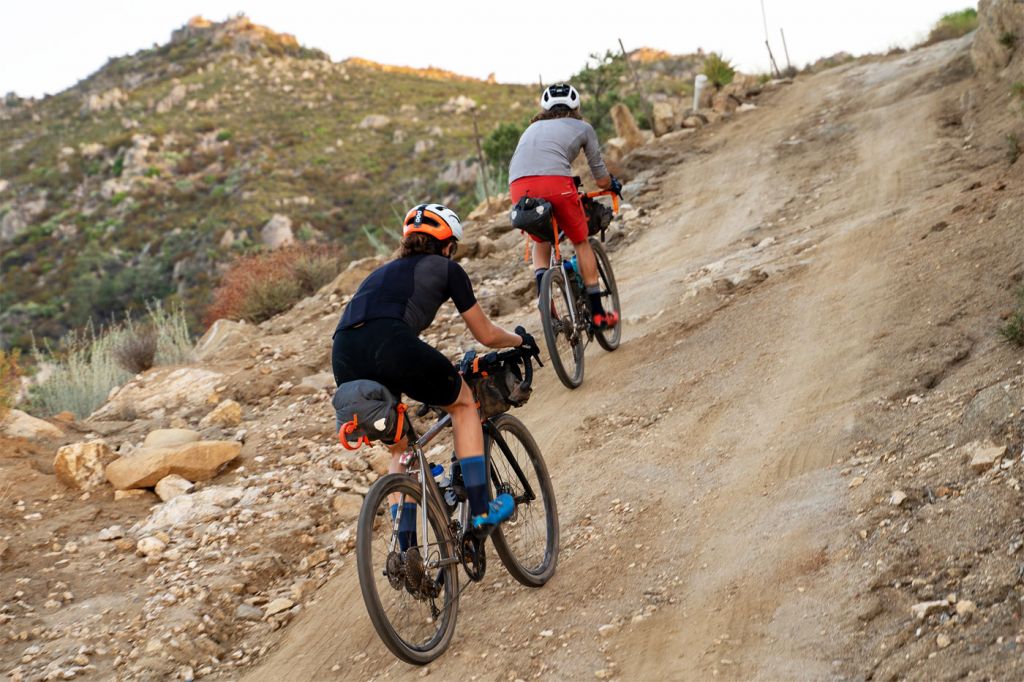
11. Remember, it’s mind over matter
As Ben explains, don’t underestimate the mental side of things: “Whether it’s racing or training, having strong mental resolve can’t be underestimated.
At the end of the day, you’re going to be on the bike for an inordinate number of hours, you’re going to hurt, but you must keep on going. Often limiting your time stopped can be a key factor on your finishing position [if racing] so having the willpower to push on, manage sleep deprivation and deal with pain is key.”
James Hayden agrees: “I would say the mental side is almost twice as important as the physical.”
12. Spend some time off social media and emails
James Hayden reckons a good GPS navigation device and a camera is all the tech you need: “Leave the phone at home if you can or turn it off. Be present in the experience.”
13. If things go wrong, remain calm
Bike-packing isn’t without its challenges. There’s always the risk of a flat tyre, a mechanical issue, a wrong turn or an injury. It’s the sense of achievement at the other end that makes the experience worth the risk.
“Being able to make good, quick decisions is definitely an important attribute of ultra-endurance cycling – there are so many variables and challenges that you end up facing,” says Ben.
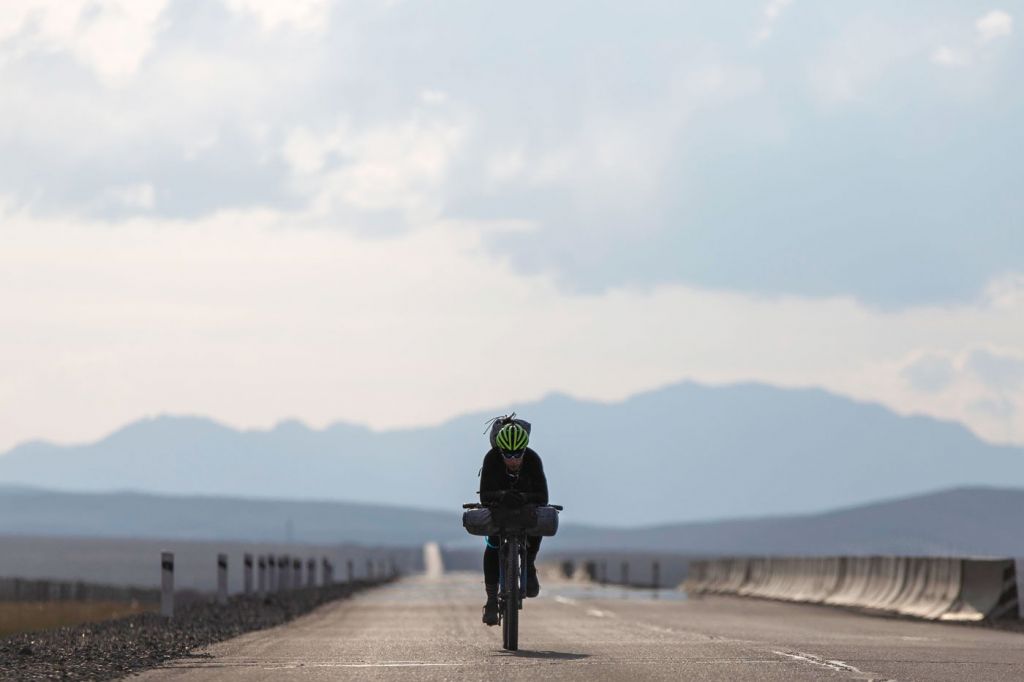
14. Don’t overthink it, just do it
“Find a challenge and have a go,” says James Hayden. “We have all failed trying, but better to try and fail than not try at all. Life is about living, not simply existing.”
“If it interests you, get out there and try it! Whether it’s a weekend on your local roads and trails or weeks/months crossing continents, there are few other things that give you the same feeling of freedom, adventure and simplicity,” adds Ben.
Read more sports and fitness-related articles in our dedicated section here.
![]()




You must be logged in to post a comment.